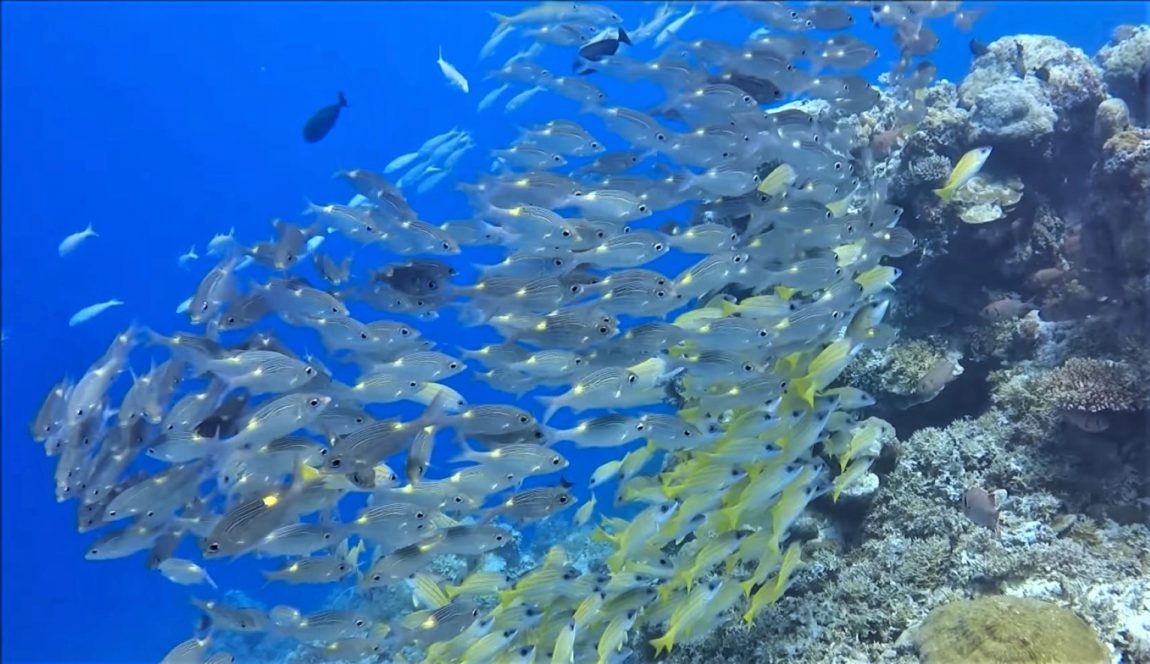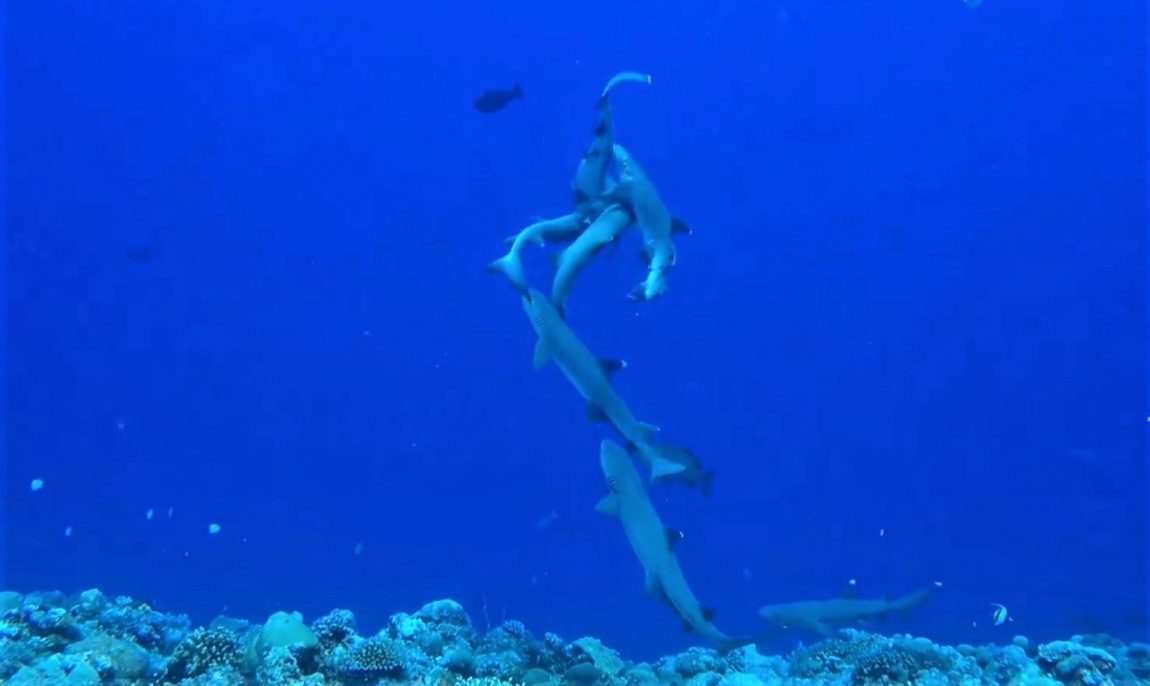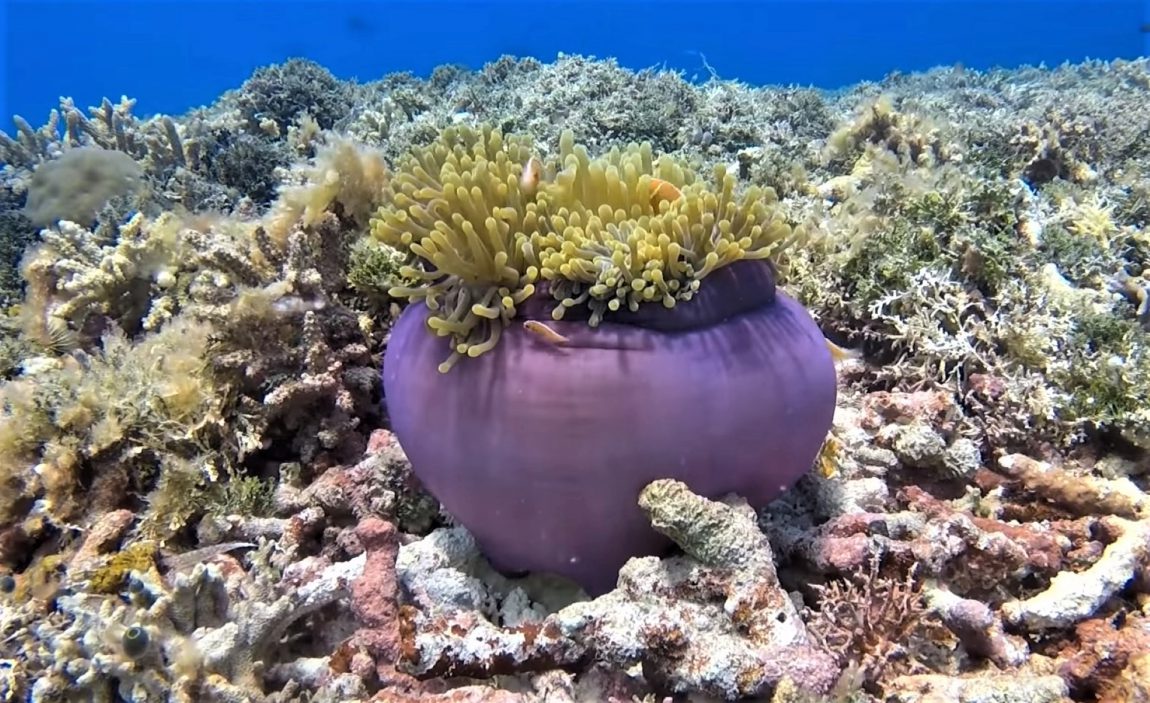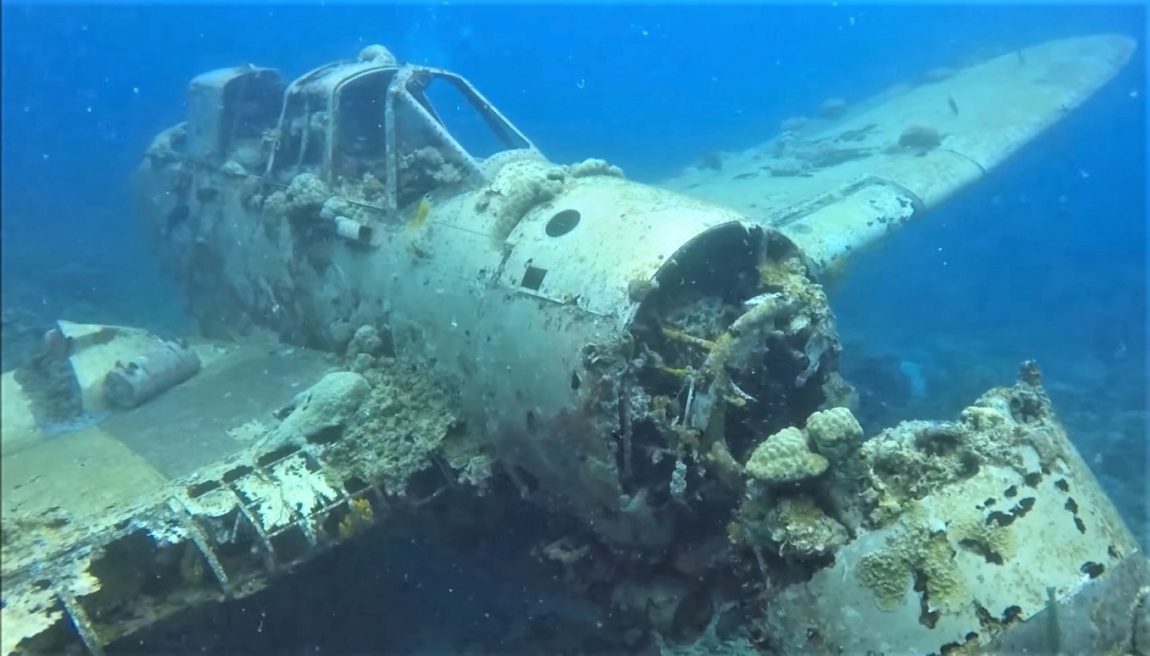
Dive site: Blue Corner
Location: Palau, Micronesia
Type of dive: Wall, drift
Maximum depth: 40 m
Level: intermediate to advanced in case of current
Water temperature: 27 – 29° C
When to go: You can dive here year-round, but the best time is from April to December, with top conditions in July and August. From January until March it rains some more, so the visibility can be limited.
Palau, an island nation in the Pacific Ocean, about 500 miles/800 km east of the Philippines, is a diver’s dream, nowhere more so than at a piece of coral reef called Blue Corner.
It’s a slope followed by a sharp drop-off, and it’s one of the most famous dive sites on the planet.

The current is strong, so you attach yourself to a line and hook and then attach the hook to a lump of dead coral, relax and watch. The first thing that overwhelms you is the sheer density of fish around you. Thousands of five-inch, deep blue and gray red-toothed triggerfish propel themselves by frantically waving their enormous dorsal and ventral fins, to comical effect.
Then you start to see the big once just outside the drop-off, like the white-tip sharks, the gray reef sharks, both about 1.5 meters long, and the smaller black-tips. You’ll usually see one or two at any given moment, some 20 to 30 during a dive.
The white-tips seem utterly unafraid of people and swim right up to you before turning away at the last second. Then come the blue-green, five-foot Napoleon wrasses, decimated throughout the Pacific by the extraordinary prices paid by rich Chinese for live ones, but like the sharks, protected in Palau.

More common, the silver, deadly looking barracudas, the Ferraris of the reefs, travel in schools during the day and hunt alone at night. Two-foot oval travellies, junior cousins of the tuna, are also capable of great speed, but at Blue Corner, they just cruise by in no great hurry.
Amid all the heavy hitters — apex predators to marine biologists — are not only the triggerfish but also dense schools of slim fusiliers, nearly a foot long, their backs an intense shade of lemon yellow, and the four-inch queen fish, which have the color and intensity of a spark.
This rich marine population is no accident, but the result of Palau’s history of conservation. Large swaths of the nation’s southern islands, called the Rock Islands, where most of the diving takes place, have been off-limits to commercial fishermen since 1997, and poachers are regularly sent to jail.
The Philippines, Indonesia and Papua New Guinea have greater varieties of fishes (3,000 versus 1,500 in Palau) and corals (700 versus 450), but a laissez-faire attitude and a population explosion in those places have left their reefs largely depleted of anything sizable. But in Palau, the big fish are still very much in evidence, and the government of President Tommy Remengesau Jr. is not only expanding its network of no-fishing areas, but has also challenged other island nations to do the same.
While the big fish are the big attraction, some of Palau’s 76 official diving spots offer extraordinary natural beauty.

Palau has some 20 commercially dived wrecks, mostly Japanese cargo ships sunk in March and July 1944, including a trawler nicknamed the George Bush because it was sunk by a torpedo launched by Ensign George H.W. Bush from his Avenger fighter plane. There are also wrecks of Japanese Zero fighter planes and a couple of American warplanes.

.
MicDiver©
.